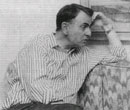Tribute to a star
 Every star has a life and a subsequent death. But still, each one is different in the amount of darkness it drives away due to its own luminance. Born on November 9, 1934, Carl Sagan was certainly one of the brightest. Sagan died of pneumonia at the Fred Hutchinson Cancer Research Centre in Seattle, US, on December 20, where he had undergone a bone marrow transplant early this year.
Every star has a life and a subsequent death. But still, each one is different in the amount of darkness it drives away due to its own luminance. Born on November 9, 1934, Carl Sagan was certainly one of the brightest. Sagan died of pneumonia at the Fred Hutchinson Cancer Research Centre in Seattle, US, on December 20, where he had undergone a bone marrow transplant early this year.
He transformed the way of communicating science and brought planetary secrets to the living rooms of ordinary people. Few people know about his achievements as a professor of astronomy at Cornell University or of his search for extra-terrestrial intelligence. But he would be remembered and loved because he showed that science could be interesting. And that was more than what the masses wanted. When his 13-part serial Cosmos first came on tv screens in 1980, it created a worldwide euphoria.
Sagan's first contact with science was probably at the age of seven, at the Ultrech branch of the New York public library, where he randomly picked up a book on stars. In his words, "I felt a sense of vertigo leafing through it. How could these huge bodies
